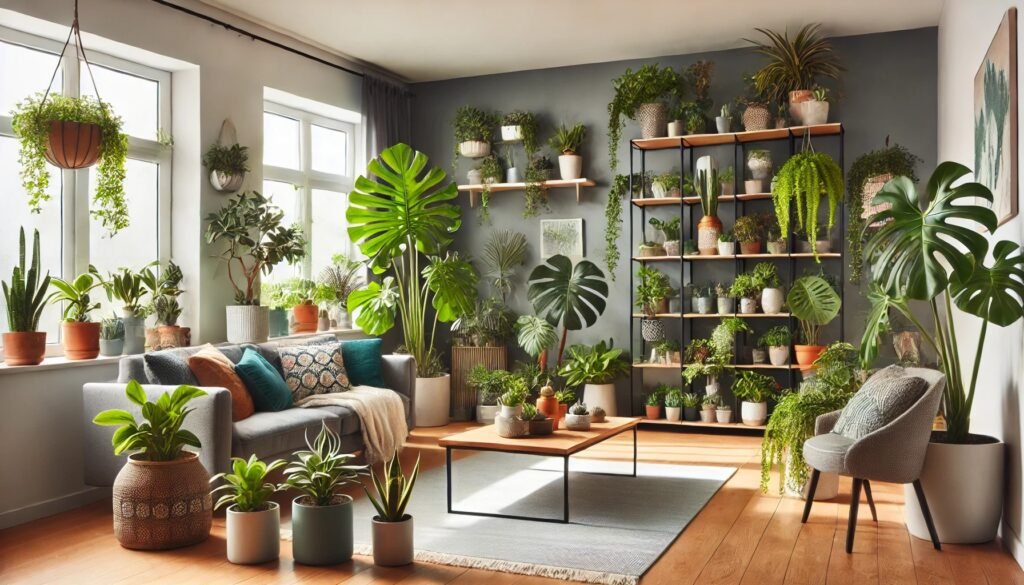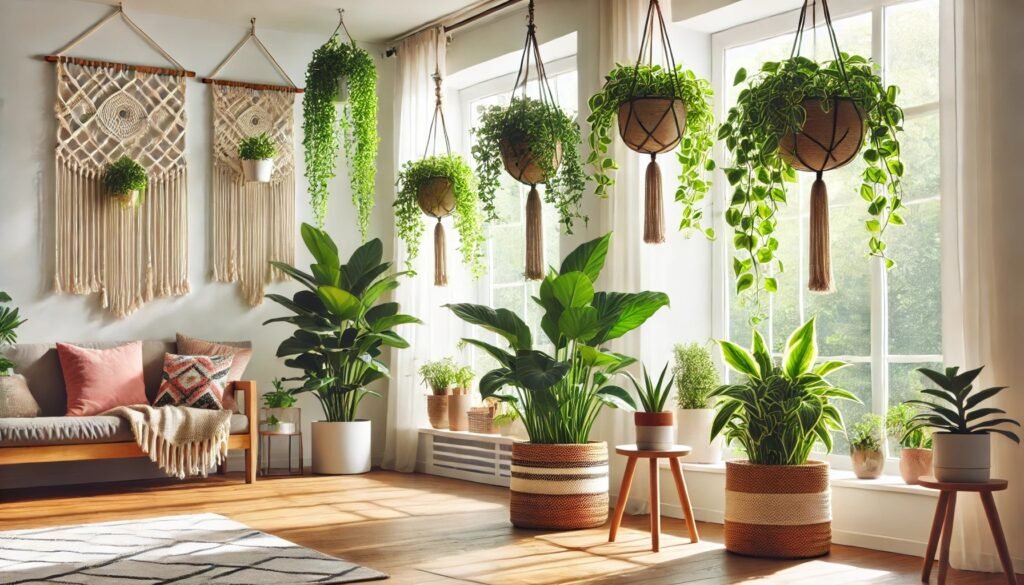
Cacti are perfect for anyone looking to create a low-maintenance, desert-themed indoor garden. With their unique shapes, textures, and low water needs, indoor cacti can add a bold and minimalist vibe to any space. From small tabletop varieties to larger statement plants, there is a wide variety of indoor cacti that can thrive with minimal care.
In this article, we’ll explore the best indoor cacti and provide tips on how to care for them, so you can create your very own desert garden at home.
Why Cacti Are Perfect for Indoor Gardens
Cacti have evolved to thrive in arid conditions, making them perfect for indoor spaces where moisture is often limited. These resilient plants require very little water and can tolerate a range of temperatures. Plus, their sculptural forms make them a perfect choice for modern, minimalist décor.
Another reason cacti are ideal for indoor gardening is their ability to purify the air. Like most plants, they absorb carbon dioxide and release oxygen, but cacti can also filter out pollutants, contributing to a healthier living environment.
Exploring Varieties of Indoor Cacti
There’s no shortage of cactus varieties to choose from when planning your indoor garden. Each offers unique characteristics, whether you’re looking for something small and spiky or tall and smooth. Let’s take a look at some popular indoor cactus varieties.
Bunny Ear Cactus (Opuntia microdasys)

The Bunny Ear Cactus is a great choice for a cute, low-maintenance indoor plant. Its name comes from the small, fluffy pads that resemble bunny ears. This cactus doesn’t have sharp spines, making it a safer option if you have kids or pets at home.
Christmas Cactus (Schlumbergera bridgesii)
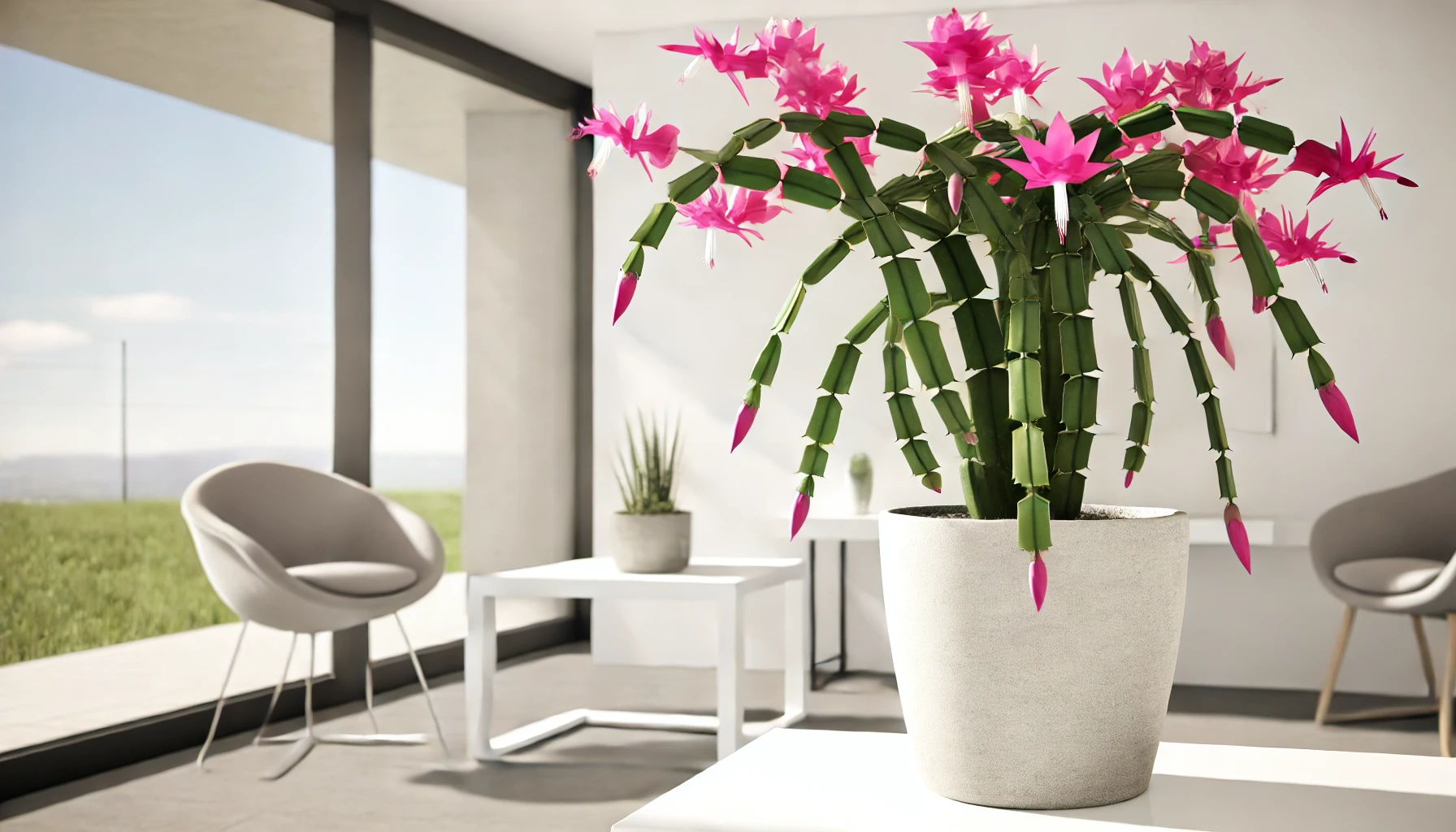
Unlike most cacti, the Christmas Cactus blooms with beautiful pink or red flowers in the winter. It thrives indoors with a bit more water than typical cacti and enjoys indirect sunlight. Its drooping branches give it a unique look, and it’s perfect for hanging baskets.
Barrel Cactus (Ferocactus wislizeni)
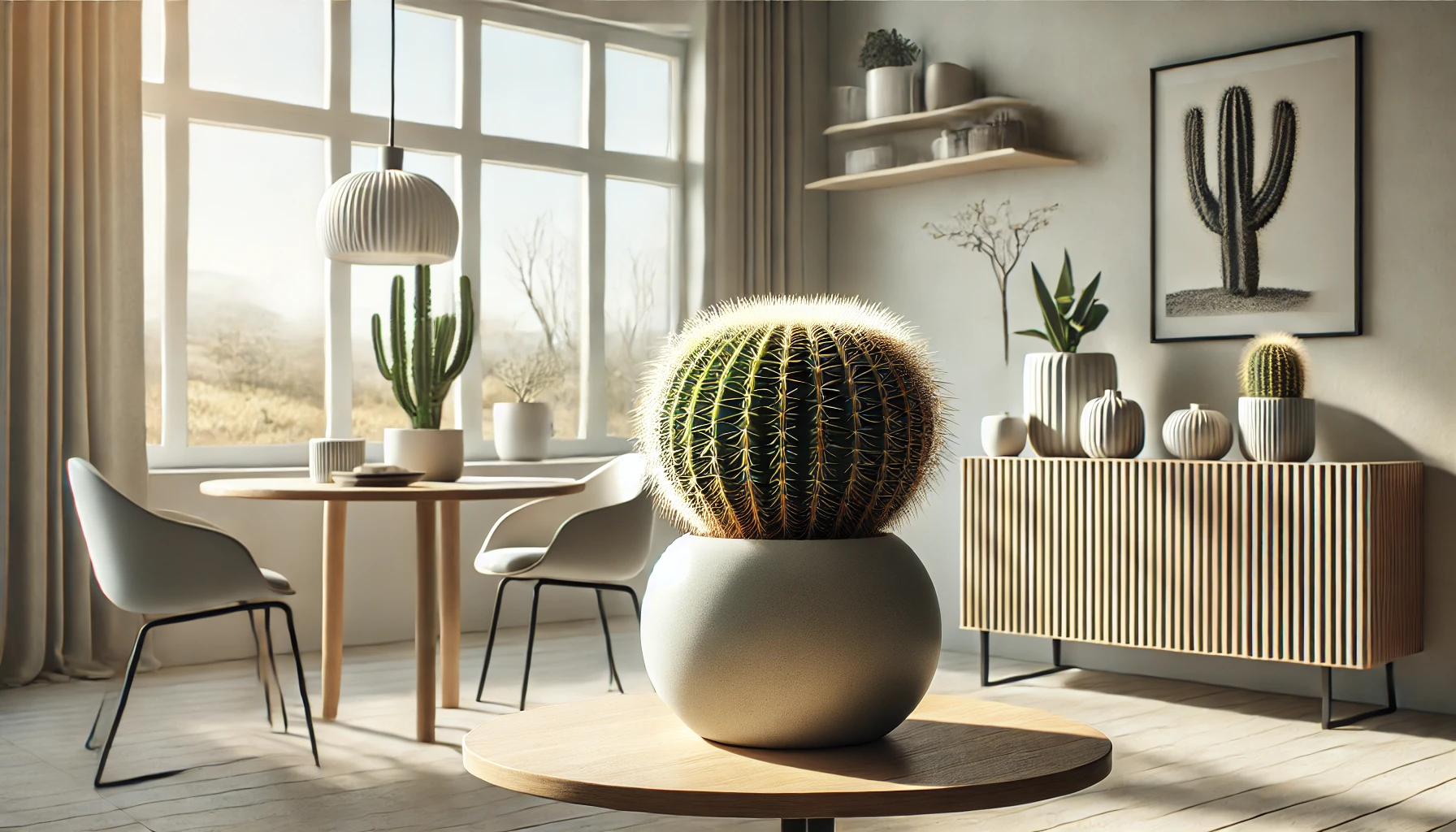
The Barrel Cactus is an excellent choice if you want a larger, statement-making cactus in your home. Its round, ribbed shape is iconic, and it can grow up to a foot tall indoors. It’s easy to care for and prefers bright, direct sunlight.
Old Lady Cactus (Mammillaria hahniana)
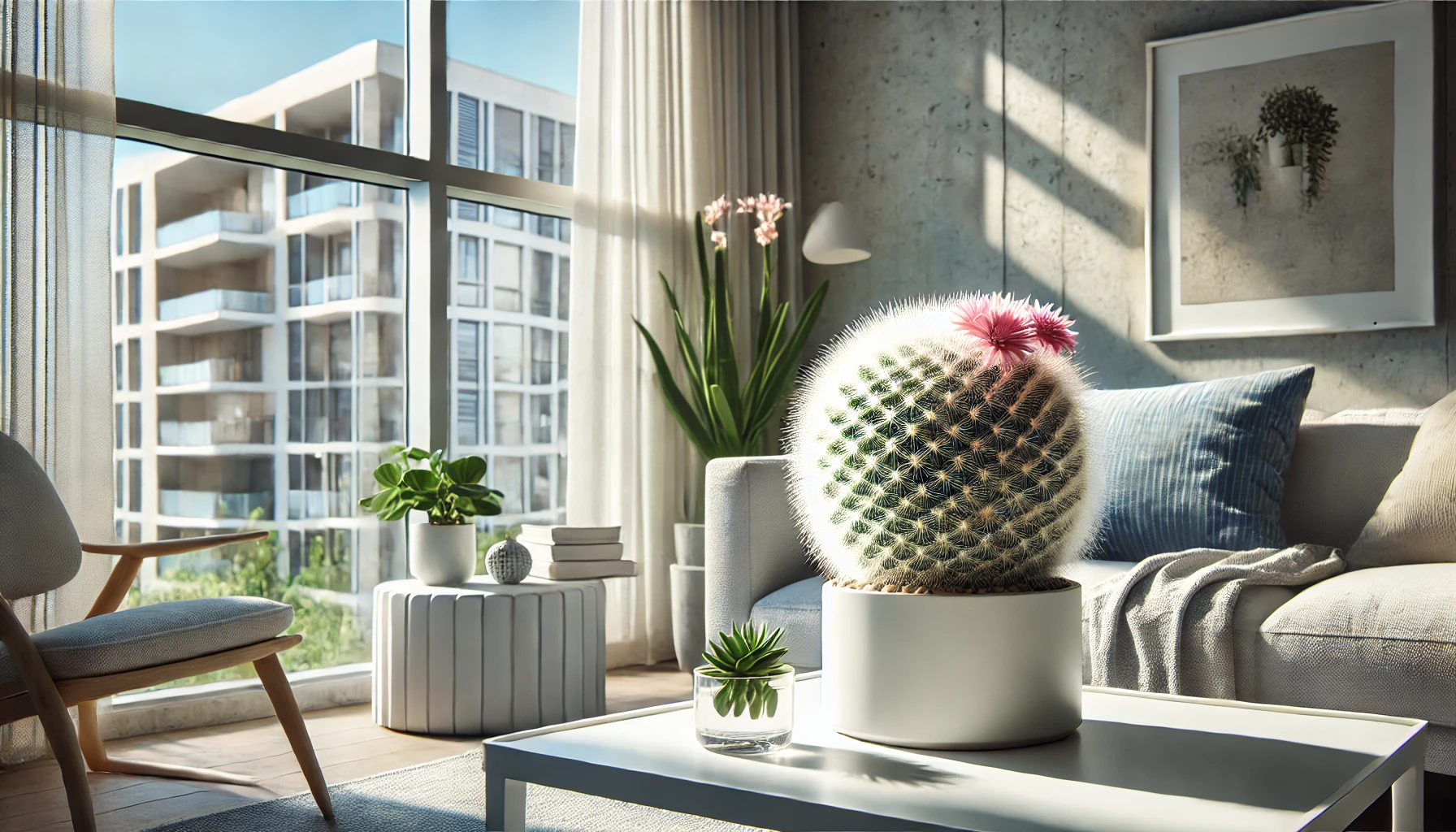
Known for its halo of white hair-like spines, the Old Lady Cactus is a beautiful and low-maintenance plant. It grows in small clusters and produces pink flowers, making it a lovely addition to your indoor garden. This cactus requires minimal water and can thrive with indirect light.
Saguaro Cactus (Carnegiea gigantea)

The Saguaro Cactus is a classic symbol of the desert. While it’s known for growing tall in the wild, it can be grown indoors as a smaller, slow-growing plant. Its upright shape and distinctive arms make it a striking centerpiece in a desert-themed garden.
Designing a Desert-Themed Indoor Garden
Creating a desert-themed indoor garden is all about simplicity, texture, and bold design. Here are some tips to get you started.
Choose the Right Containers
When designing your cactus garden, the containers you choose can make a big difference. Opt for pots with good drainage, as cacti hate sitting in water. Terra cotta pots are a great option because they allow excess moisture to evaporate and provide a natural, rustic look.
You can also mix and match pot styles to create variety in your design. For example, pairing small white ceramic pots with larger, earthy containers can give your desert garden a modern and eclectic feel.
Create a Simple Layout
To mimic a desert landscape, aim for a minimalist design. Group cacti together in clusters, leaving plenty of space between each plant. This not only allows each cactus to stand out but also makes watering and maintenance easier. Use small pebbles or gravel to cover the soil and add texture to your arrangement.
For an added touch of authenticity, consider placing a few decorative rocks or sand in your garden to complete the desert look.
Incorporate Other Desert Plants
While cacti will be the stars of your garden, you can also incorporate other desert plants to add contrast and variety. Succulents like Aloe Vera or Echeveria are perfect companions for cacti, as they have similar water and light requirements. Adding some trailing succulents can also give your garden a more dynamic and layered appearance.
Best Practices for Caring for Indoor Cacti
Caring for indoor cacti is simple, but there are a few key tips to keep in mind to ensure your plants stay healthy.
Watering and Humidity
One of the biggest mistakes people make with indoor cacti is overwatering. Cacti are desert plants, so they’re designed to survive with minimal water. Water your cacti only when the soil is completely dry—this might be once every two weeks in cooler months and more frequently during the summer.
When you water, give the plant a good soak, but make sure any excess water drains out of the pot. Cacti do not like sitting in water, as this can lead to root rot.
Humidity isn’t an issue for cacti, as they prefer dry air. This makes them perfect for indoor environments where the air might be less humid, especially in winter.
Light and Temperature
Cacti love sunlight. Most indoor cacti prefer bright, direct sunlight for at least six hours a day. Place your cacti near a south or west-facing window to give them the light they need. If your space doesn’t get enough natural light, you can supplement with a grow light.
In terms of temperature, cacti are quite adaptable. They thrive in temperatures ranging from 60°F to 85°F (16°C to 29°C), but they can tolerate cooler conditions during the winter. Just avoid placing them near drafts or heating vents, as sudden temperature changes can cause stress.
Feeding and Fertilizing
Cacti don’t require a lot of feeding, but they will benefit from a bit of fertilizer during their growing season (spring and summer). Use a cactus-specific fertilizer or a balanced, water-soluble fertilizer diluted to half strength. Fertilize once a month during the growing season, and stop feeding in the fall and winter when the plant enters dormancy.
Pruning and Repotting
Most cacti don’t need regular pruning, but you can remove any dead or damaged parts to keep the plant looking its best. If your cactus outgrows its pot, repot it in the spring. Choose a pot that’s only slightly larger than the current one to avoid water retention in excess soil.
Propagating Cacti
If you want to grow more cacti from your existing plants, propagation is a great option. Many cacti can be propagated from cuttings or offsets. Simply cut off a healthy piece of the cactus and let it dry for a few days to callous over. Then, place it in well-draining soil and water sparingly until roots develop.
Propagation is an easy and rewarding way to expand your desert garden without buying new plants.
Final Thoughts
Indoor cacti are the perfect plants for anyone looking to create a low-maintenance, desert-themed garden at home. With so many varieties to choose from and minimal care required, these plants offer beauty and simplicity in one. Whether you’re a seasoned gardener or just getting started, cacti are an excellent choice for brightening up your space and bringing a bit of the desert indoors.
Stay connected with the world of plants! Subscribe to Phylofy for expert gardening tips, DIY projects, and eco-friendly inspiration. Join our community and nurture your love for nature. Don’t miss exclusive content and updates. Subscribe now!


